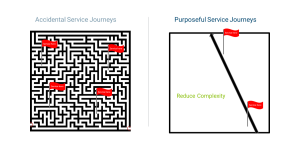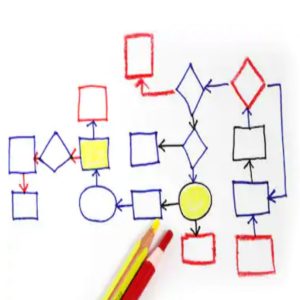Written by: Dr Shreekant Vijaykar
About the author: Director of Asia Operations at COPC Inc.
![]()

Consider that you have to buy something for yourself. Say you are looking for one of those work-from-home chairs. Sitting in your current, wooden chair is getting rather uncomfortable. So you give a quick scan on the net, find some interesting options, and then try to purchase one that was rated well.
But then things start getting difficult. The purchase does not go through. Something seems wrong with the payment gateway. So you click the “click here to chat” button. The chat is poorly scripted and refers you back to the website or the call centre. You call the toll-free number and wait forever before someone answers, just to tell you that the discount you saw online is not available for phone purchases. Or the colour is out of stock. Or it is going to take way longer for the delivery than what is mentioned online.
By now you have either moved on to another brand or, if you have the patience levels like mine, probably abandoned the purchase project altogether. And this is just the “buy” part of the customer life cycle. We have yet to talk about the “use” part.
We have all come across these situations. Sometimes we are at the receiving end; sometimes it is our brand that is in question. Why do we see such scenarios frequently, that too despite the proliferation of multiple channels, and advent in tech, and awareness about customer eccentricity?
What happens when things are not simple?
A recent consumer study done by COPC Inc. indicates that over 44% customers report that it is not necessarily getting any easier or any more difficult to interact with companies and brands, with or without the pandemic. Only about 69% report that they can get their issues resolved with the new self-service technology channels and this is due to either the digital channels do not work or are too complex to use.
Several studies in this area suggest that one of the main reasons for this is not considering the “effort” a customer has to make to engage with you, despite knowing that unnecessary efforts will lead to dissatisfaction, and further to churn of customers. According to the Corporate Executive Board (CEB), a consulting firm, now part of Gartner, customers face unusually high hurdles while interacting with brands. For example, 59% report expending moderate-to-high effort to resolve an issue. 62% report having to repeatedly contact the company to resolve an issue, while 56% report having to re-explain an issue.
All of this leads to higher effort and erosion of customer experience and loyalty. So what should we do to avoid this?
Service Journey Thinking
To help companies and brands simplify the interaction of their customers and reduce their efforts, it is useful to consider thinking in terms of Service Journeys. According to COPC Inc., a Service Journey is the path that a customer takes across multiple channels in order to resolve a request or an issue.
The more complex a transaction, the more communication channels a customer has to navigate, and the longer it takes, the more effort the customer is putting with your brand and that is something you want to avoid. With many more channels at hand, we see that the simple has become complex and the clear has become muddled. About 48% of survey respondents in the COPC Inc. study said that they had to change channels to have their issue resolved due to either complexity or poor customer service.

A Harvard Business Review study found that the best tool for measuring consumer-engagement efforts is the “decision simplicity index,” a gauge of how easy it is for consumers to gather and understand (or navigate) information about a brand, how much they can trust the information they find, and how readily they can weigh their options.
This sounds commonplace, but our experience shows otherwise. Companies and brands continue to think “vertically” instead of “horizontally”. This is due to various reasons – current organizational structures working in silos (marketing vs operations vs customer service), performance metrics that do not consider overall Service Journeys, tools that do not support end-to-end customer view – to name a few. This is further pronounced when you outsource your customer interactions to a third party and that brings further opacity in the journey. A key reason for this complexity is the lack of design considerations for supporting Service Journeys that cut across multiple interactions.
What should we do for making things simple?
As some of my colleagues say, do not make the complexity of your processes the driver of dissatisfaction. Review your processes and make life as simple as possible for your customers. Here are a few steps you can take to simplify the customer interactions and improve the overall customer experience immensely:
- Make the process easy to understand. Think from a customer point of view. Avoid jargons, company-specific terms in your communication, both during “buy” and “use” phases for the
customer. - Take the horizontal approach of Service Journey Thinking. Track performance across multiple interactions. E.g. consider overall handle time for a case across multiple interactions instead of the handling time of one individual interaction in one channel like phone or chat.
- Focus on next-issue avoidance. Don’t ask the customer to take an unnecessary decision; don’t try to troubleshoot beyond the issue at hand, and at the same time anticipate the next possible issue and try to address it right away.
- Identify places where there is waiting and delay and work on killing it. If the delay is unavoidable, see how you can keep the customer informed and in consent.
- Map Service Journeys. Document some of the common Service Journeys that your customers undertake. You don’t need a lot of these; maybe the Top 5. Mapping the Service Journeys of your customers with techniques like Service Blueprinting, or simply process mapping, and visualizing these Journeys, go a long way in improving them.

We will explore some of these themes further on this blog in the next posts. But at this stage, I would like to summarize that thinking about how to simplify the service journeys of your customers across multiple interactions and channels is an essential strategic element for marketers and business leaders. This is critical for building a competitive edge for your brand in an especially noisy, VUCA marketplace of today.
